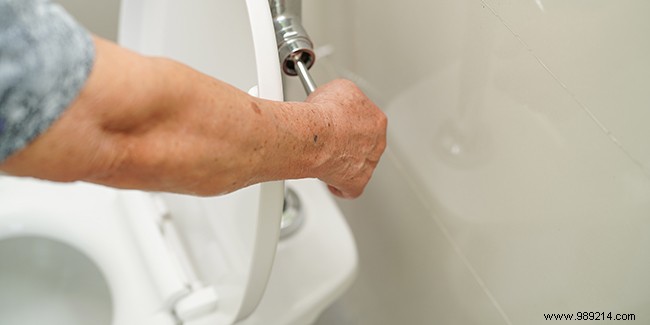
Urinary problems, a subject still too often taboo, can affect the entire population. But, the older you get, the more common they can be. For example, 2.6 million people over the age of 65 are affected by urinary incontinence in France according to figures from Health Insurance.
For seniors, these urinary disorders have serious consequences in their everyday family and social life. However, these health concerns are not inevitable:there are treatments to treat certain urinary disorders and improve the quality of life of seniors.
Incontinence, or urinary leakage, can result, especially in seniors, from a physical or mental disability that leads to a loss of autonomy. There are several types of urinary leakage:
Urinary incontinence is favored by aging (weakening of the muscles of the pelvic floor, Alzheimer's or Parkinson's disease, the consumption of certain medications), by the reduction in mobility due to a physical or psychological illness and, in women, by menopause due to estrogen-progestogen hormonal drop.
This disease is a dysfunction of the evacuation of urine. It manifests itself in several ways. Or urination (evacuation of urine) requires an abnormal delay of several seconds. Either the bladder takes time to empty, a symptom that normally appears with age, but if urination lasts more than a minute, we speak of dysuria. Either urination is intermittent and requires effort to resume. Either, finally, the evacuation of urine is painful, a sign of a urinary tract infection.
Pollakiuria is characterized by the need to urinate with an abnormal frequency and in small quantities. These symptoms occur both day and night. This disease may be due to an abnormal contraction of the bladder. It is especially common in older women. In men, pollakiuria is often due to dysfunction of the prostate or a narrowing of the urethra.
This urinary problem results in acute retention of urine and the inability to go to the toilet. This symptom, which is very painful, must be treated urgently medically by drainage of the bladder by probe or puncture.
Source of social and family isolation, withdrawal into oneself for seniors, urinary problems are also the third cause of entry into an institution for the elderly. However, they are not a fatality and treatments exist to relieve them, or even treat them.
The medical care of the elderly who suffer from urinary disorders is essential. After an interview on the origins and context of the person's urinary problems, the medical staff offers various tests, in particular via a urine dipstick, which makes it possible to diagnose and monitor certain diseases related to the urinary system, such as infections for example.
Once diagnosed, urinary problems, including incontinence which is the most common disorder, can be treated in several ways:
In parallel with these treatments, the use of absorbent protection allows seniors to resume a normal life, to leave their homes, to have physical or cultural activities without fear of a urinary incident.